 Plzen Historical Underground
Plzen Historical Underground Plzen Historical Underground
Plzen Historical Underground Link to the Underground video clip.
Link to the Underground video clip.
The entry and stairs into the Underground
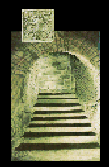
Plzen's underground is an integral part of a structural historical development of Plzen, established 1295 at the confluence of rivers Mze, Radbuza, Uhlava and Uslava, in the middle of Plzen hollow.
An important administrative centre of this region was originally the castle of the house of Premysl in Stary Plzenec, 15 km south of Plzen, declared by written documents back to 976.
In the end of the 13th century Czech king Wenceslas II decided to move the centre of royal power in West Bohemia to the new king town New Plzen, as the town was called at that time. The new town was built in broad-minded style. Around an oblong square there were situated regular blocks of houses delimitated by a rectangular network of streets. The Gothic outlook of citizen houses was usually damaged by following reconstructions.
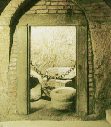
Plzen's historical underground was begun during the 13th century and finished during the 19th century. The underground is constituted by two or three level cellars, that were used for preserving food, for manufactures, for malt-houses and wine-vaults. These cellars were also used for technical purposes as galleries bringing water to the water supply tower and as sewage and wells. The oldest houses were located in the front parts of the lots, in the back-yards were situated stables, sheds, free yards and wells. Large number of wells at a restricted area dissolved the level of bottom/lower water in the whole town. Dry wells were secondarily used as cesspools.
Archeological research of these wells/cesspool was very successful, many subjects declaring the everyday-life in a medieval town were found. Choice of these finds of ceramics, glass and wooden products is exhibited in the part of the historical underground that is opened for the public.
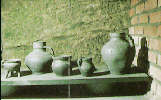
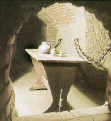
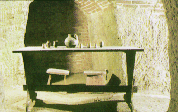
In the beginning of the 16th century water supply became critical. Municipal authorities therefore decided to build new waterpipes, many changes of the water regime were connected with and a water tower with a machine, that pumped water by a system of level pumps. The water was held in a leaden reservoir and led in wooden pipes to the public fountains at the main square. The water tower is, even today, one of the dominants of the look of Plzen.
The water system in the Underground
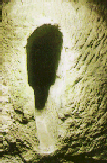
Another important achievement connected with Plzen's historical underground was building up of the outlet sewer, in which the water was drained from the town slaughter-house at southern part of the town. This sewer was made from bricks and financial subsidy to this project was given by the guild of Plzen butchers, the building up was finished in 1637. During the following three hundred years the sewage system was connected to this sewer. This system was one of the best systems used in Czech towns of that time.
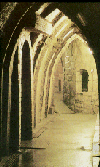
In the publicly opened part of the underground you can see typical exhibits of specialized municipal cellars from 14th and 15th centuries. Also the methods of construction of backbuildings and technical background are shown here. Archeological finds and subjects showing everyday-life in a medieval town are installed in this exhibition. Part of the underground was, thanks to municipal authorities, opened for the public. In helps you to understand the past of one of most important medieval royal towns in a very pleasant and interesting way.
 and
Czech
and
Czech  versions.
versions.
Copyright © 2002 City of Plzen. All Rights Reserved.